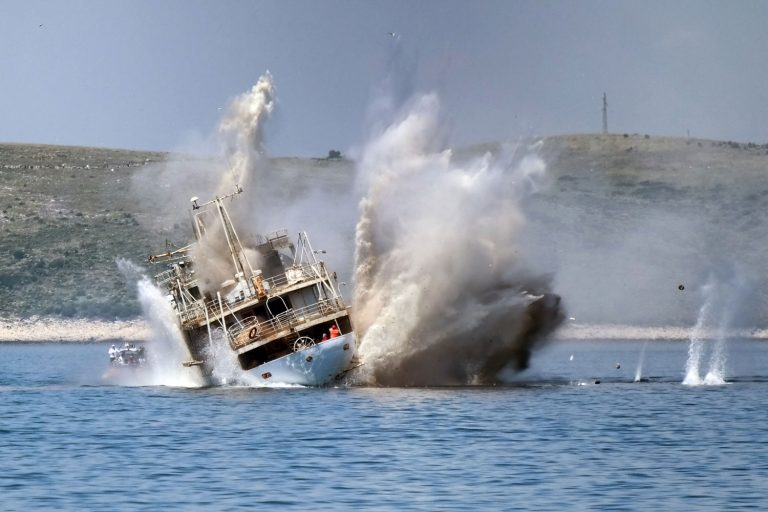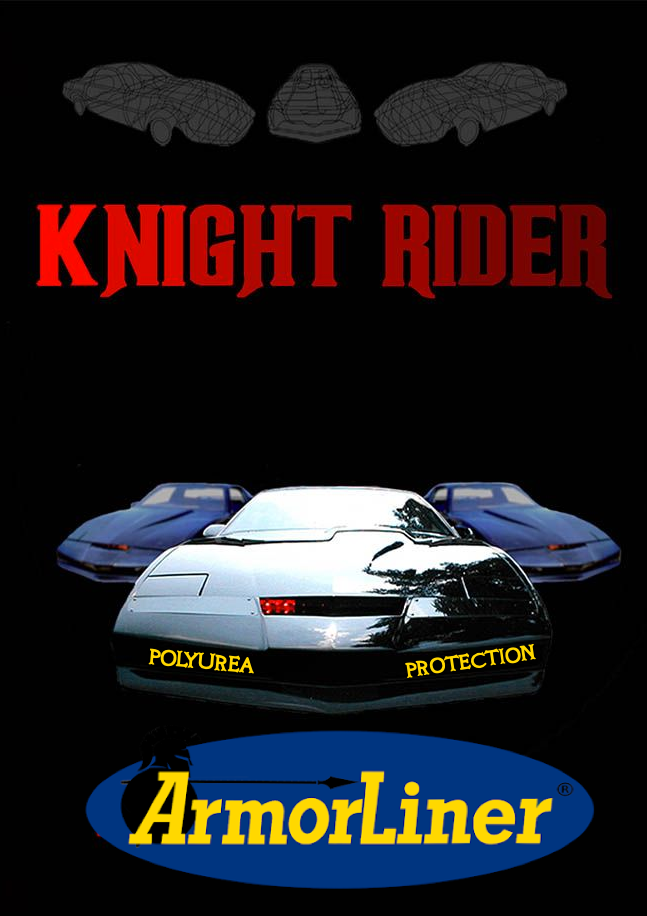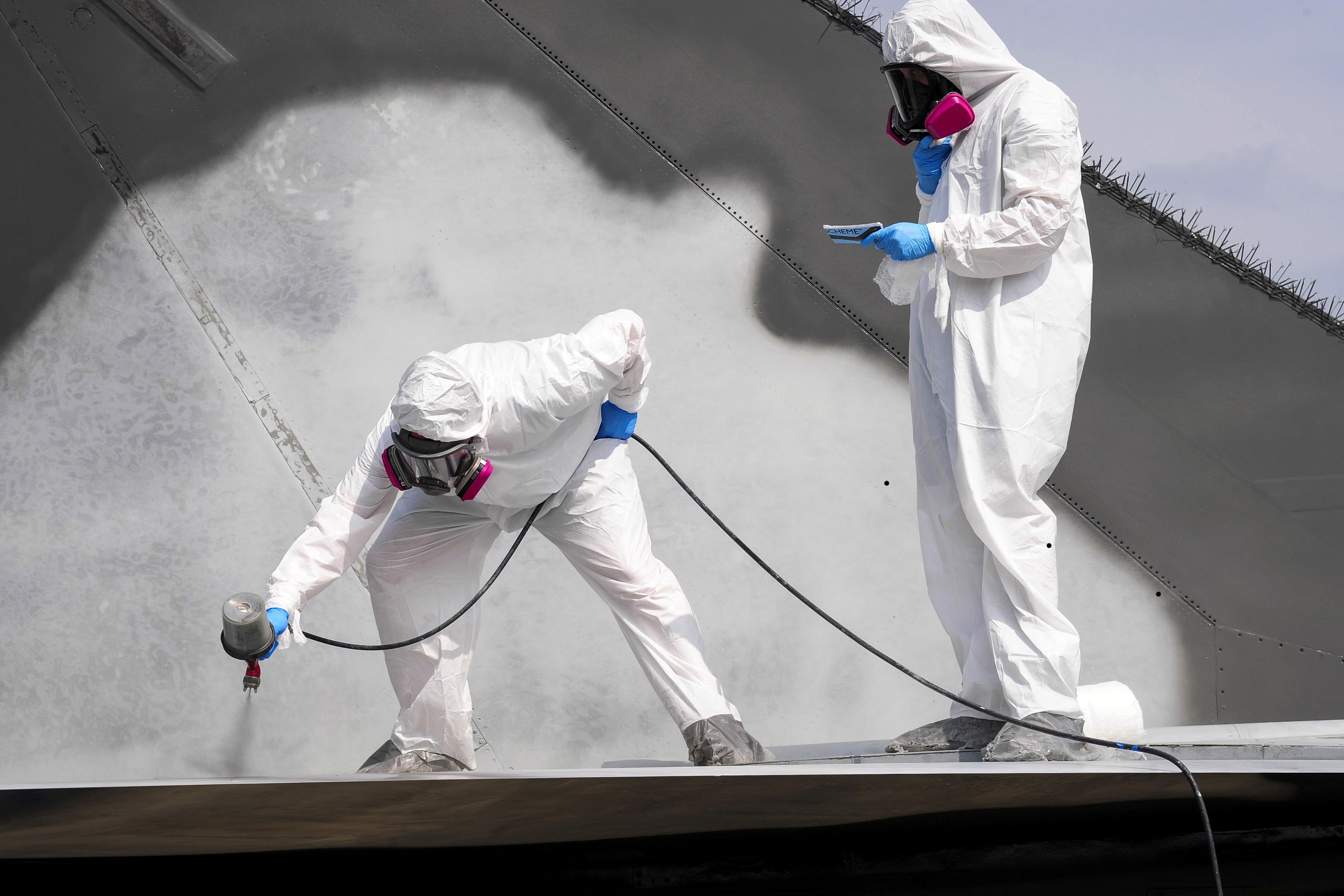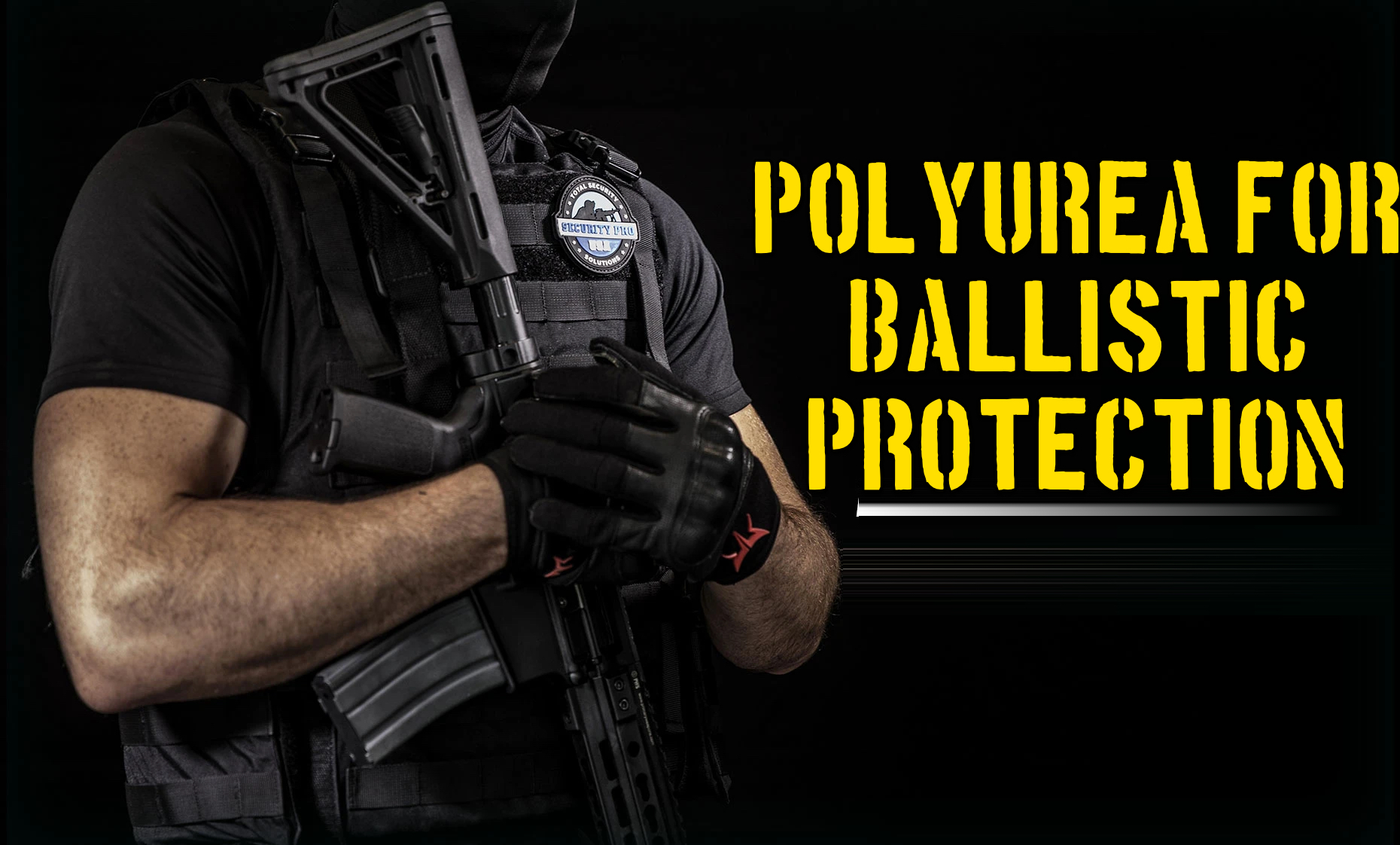To increase the resiliency of ships structures during underwater explosions tiny steel pieces coated with polyurea were utilized to study the blast protection impact. Through the testing of plain steel plates at various standoffs, a suitable distance was chosen as the standoff reference to test the coated plates. Tests on the experimental properties of various coating places (front and rear) along with coating thickness were performed to determine the factors that affect the effectiveness in blast resistance for steel substrate plates. When compared to the uncoated steel plates and it was found that the polyurea coating was shown to limit the deformation of plates during blast tests, regardless of the back and front surface placed in the polyurea layer. An increase in coating thickness can reduce the deformation of the plates. Additionally to that, it is possible that the properties that are the property of the material, as well as the substrate-coating bond strength, can impact the protective effects on the polyurea coating.
The danger of terrorism in recent years has spurred an investigation into the significance of the structural protection of ships operating on the surface. On the 12th of October in 2000 the USS Cole was attacked in Aden Harbor, Yemen. The terrorist attack caused severe damage to the ship and also caused massive economic losses. Following the terrorist attack, it was evident that the significance of materials utilized to increase the resilience of ships had been emphasized.
A number of studies have been conducted to examine the impact on the effect of polymer coatings on various structures that have been exposed the blast’s damage and penetration over recent times. The findings show that polymer coatings increase the ballistic resistance and the explosive resistance to metallic structures and buildings 28 – 8[ 2- 8]. If a brick wall or concrete structure breaks down under the pressure of explosive load the brick fragments smash into the and splash. When the exterior of the wall or concrete structure was coated with polyurea the free flight of fragments of the back of these structures after the blast was stopped.
Another study has discovered that the polymeric coating improves the impact resistance of hard substrates like metal or composite structure 611]. 116-11. Amini et al. Amini and colleagues 6studied the effects of the effect of a polyurea layer placed on the back of a steel plate during dynamic shock. It was discovered that polyurea increased energy absorption, and also lowered the deformation that steel plates suffer from. Ackland et al. Ackland and colleagues conducted a mathematical and experimental study of blast resistance of plates that were coated polyurea over the reverse surface under the local load of explosive. The results revealed that the residual deformation increased along with the increasing coating thickness. Besides, Ackland et al. In addition, Ackland and colleagues 10, 12], 12discovered a reduction in the strength of plates made of mild steel by using a polyurea coating is sprayed on their backside. Additionally, they discovered they could see that blast resistance result of a more dense coating of the reverse of the plate was greater over a thin one. Roland et al. Roland et al. 8., 9Roland and colleagues applied elastomeric coatings over the face surface to increase the ballistic resistance of steel armors when subjected to the impact force of the high-speed projectile. Additionally, polymer-metal laminations were also utilized to improve the performance of the ball, and also provide superior ballistic protection over uniform polyurea coatings.
When using polymeric material to improve the blast resistance of the hard substrate The location on the polyurea layer on the back or front face is crucial. Factors that influence the outcome should be considered 12to 1515]. Ackland et al. Ackland and colleagues. 12Ackland and colleagues [ 12 applied commercially manufactured coatings on the surfaces of steel plates made from mild in order to conduct close-in blast testing in air. It was observed that deformations of steel plates that were coated with polyurea on the front side were greater than that of the uncoated steel plate. However, the polyurea-coated back face significantly reduced the deformation of the plate during blast tests. This confirmed that the polyurea coating on the backside of the mild plates was significantly more successful at strengthening the blast resistance result than the coating applied to the front surface. Amini et al. Amini and colleagues 1313 – 15studied the effects on studying the effect of polyurea coating in the back and front faces of the steel plate. If the coating was sprayed on the front surface of the plate its compression polyurea under the stress load made it stiffer, resulting in a better impedance matching to that of the plate. Therefore, this coating on the load face of the plate transmits additional energy onto the steel plate, thereby causing the breakdown that steel plates. Contrary to this however, the coating that is deposited on the back of steel absorbs some of the initial energy impacts onto the surface of the metal plate. The result was a reduction in deformation and helping to prevent plate fracture.
According to the research of these researchers, polyurea coatings could be looked at as a means to decrease their vulnerability to damage caused by ship structures that are subject to underwater blast load.
In this study, the underwater near-field blast tests were conducted to study the effects of the polyurea coating on steel plates. The focus of the study was the issue of how the location of the polyurea coating in relation to the direction of loading and the thickness of the polyurea coating influence the blast resistance performance of steel plates. Furthermore, the dependence on the deformation and failure testing plates on standoffs between the steel plate was also examined in this article.
2. Experimental Setup
In the test of the effect of coating area (front and the back) as well as the coating thickness The final deformations of steel plates coated and not coated by polyurea were compared using the criteria for evaluating the following blast tests.
2.1. Plate Test Plate
2.1.1. Materials
Grade A3 steel is employed as substrate plates because of its availability. Its mechanical properties are described in Table 1.. Table 1Mechanical properties of the steel that was used for blast test.
Polyurea is easily synthesized using aromatic or aliphatic Isocyanates having the chemical function of oligomeric diamines 16that can be mixed and sprayed on the metal’s surface, similar to steel. The plates were created by grit blasting in order to eliminate the metal’s surface rust and then coated with the epoxy primer to improve the bond between metal and polyurea. It was then polyurea is sprayed onto the plates, cured at room temperature and kept at the room temperature for at most one week to guarantee the stability in the material. The polyurea samples utilized in this test were supplied from Qingdao Shamu International Trade Co. Ltd, China. The mechanical and physical properties for the polyurea are described in Table 2. as well as the characteristics of the stress-strain of the polyurea with high strain rates are shown in Figure 1.. Table 2Physical and mechanical properties of polyurea used in blast tests.
1. Introduction

Figure 1.The real tensile strain curves of polyurea at diverse strains.
As shown in the figure 1 in Figure 1, in Figure 1, the tensile deformation of polyurea includes three deformation characteristics which include: An initial linear elastic region which corresponds to a the smallest deformation, an area of transition when the that started to yield, and a region of viscoplasticity prior to the fracture. The behavior of stress-strain in polyurea with high strain rates is rates that are nonlinear as well as rate dependent. This was also studied by other researchers 17, 1817-18.
2.1.2. Preparation of Test Plates
In accordance with the test requirements The size of the coating polyurea layer on the steel plate was at least or double what was the thickness of substrate plate. In the tests conducted there was a thickness on the steel plate of 2 millimeters and the thickness of polyurea coatings was 2 millimeters and 4 millimeters.
It is worth noting that because of spray inhomogeneity the thickness of polyurea coating wasn’t as exact in comparison to the plate’s thickness. The average of the thickness in the middle of the polyurea coating and along its edges was typically regarded to be an indication of the coating thickness. The areal density calculated for the coatings on test plates can be found in Table 3.. Table 3Areal density of different kinds of plates for testing.
2.2. Test Setup
The experiments were conducted a pool with the test site layout as illustrated in Figure 2.. The width and length of the pool were 2 m x 2m and the depth was 2 meters. The test setup was hung in the middle of the pool The charge was 1 m lower than the surface of the water.

Figure 2 Experimental site layout.
The test plate was fixed on the test rig with bolts as shown in Fig 3. The measurements of the test plates were 0.5 m × 0.5 m, with a test area of 350 mm × 350 mm used for the experimentation. The details of the plates for blast tests and standoff are listed in Table 4. The long steel rods were used to fix the charge on the opposite side of the test plate. The wires tied to the long steel rods could be moved to achieve an appropriate distance between the charge and the test plate.

Figure 3. The details of the test set-up.
Table 4. Specifications of plates used that are used in blast testing.
Each blast testing an RDX charge of 10 grams of RDX was placed in front of the central portion of the plate to minimize the plate boundary impacts. An electronic detonator that was located in the middle of the charge was used to provide ignition.
3. Discussion and Results
The objectives of the tests was to determine the impact on the distance between standoffs, coating position (front and back) and coating thickness on substrate deformation. Deformations on the plates were evaluated after the test plates were removed from the test apparatus.
3.1. The Bare Steel Plates on Different Standoff
The deformation and damage to the steel plates that are bare at various standoffs are described in Table 5. Additionally, the variations in deformation of the test plate in their width are shown in Figure 4. The largest strain of the test plates increased when it was a distance that the charges were placed between and on the plate diminished and the variation in deformation within the local area was evidently increased. Table 5.Results of steel plates bare in different standoffs.

Figure 4Deformation of bare steel plates after the test along the width direction.
Once the standoff becomes less, much more energy is generated by the charge affected on the test plates, and the degree of test plate deformation increases. The test plates even ruptured, just like test no. 6.
As presented in Figure 5, test no. 5, at the 10 mm standoff, the plate did not rupture and just have got dishing deformation. While in test nos. 6 and 7, both at 8 mm standoff the test plates ruptured with a crack or broken into three petals as shown in Figures 5b and 5c, respectively.

(a)
(b)
(c)
(a)
(b)
(c)
Figure 5– Examples of test plates after test: (a) no rupture (10 mm standoff); (b) a crack (8 mm standoff); (c) three petals (8 mm standoff).
According to the results of test no. 6, we assumed that the deformation value at this standoff is the deflection limit for this thickness plate, and it may be considered as a reference value. Thus, the 8 mm gap between the charge and the plate, which was in test no. 6, was determined as the appropriate standoff distance in the subsequent tests.
3.2. Steel Plates Coated with Polyurea
Table 6 shows the deformation test results of the substrate plates with and without polyurea. Besides, the data on relative reduction in deformation of the coated plates with respect to bare plates are also presented in Table 6.Table 6Results of test plates coated with polyurea at the same standoff.
The thick (4 mm) and thin (2 mm) polyurea coatings, whether on the front or back surface of steel plates, reduced about 40% and 30% of the deflection deformation, respectively, while the areal density increased by only 27% or 13%.
The bare steel plates undergo elastic-plastic deformation under explosive loading, and they rupture once the deformation exceeds the ductility limit of the material. The coating mitigates the fracture or reduces the deformation of substrate effectively, regardless of whether it is deposited on the front or rear face. It was also found that once the thickness of polyurea coating increased, the maximum deflection decreased. Therefore, the coating thickness increase is effective for steel plate protection at underwater explosion tests.
As shown in Table 6, in both cases of 2 mm and 4 mm coating thickness, the steel plates with polyurea coated on the front surface performed better than those covered on the rear face at blast tests. The details are discussed below.
3.2.1. Steel Plates with Polyurea Coated on the Front Surface
Figure 6 presents the front faces of two plates coated with different thicknesses of polyurea on the front surfaces. A circular torn hole appeared near the center of each plate. The polyurea coatings disconnected from the steel plate surface and showed a circular debonded area at the center of the plates. The areas surrounded by black dotted lines in Figure 6 are the places where the polyurea layer was totally separated from the plates. The average diameter of the unbonded area was about 260 mm for thin polyurea coating (2 mm), while for thick polyurea coating (4 mm), the value was 210 mm.
(a)
(b)
(a)
(b)
Figure 6-Front faces of steel plates with the polyurea layer on the front surface after tests. (a) 2 mm polyurea coating (∼260 mm diameter of the unbonded layer). (b) 4 mm polyurea coating (∼210 mm diameter of the unbonded layer).
The deformation of the steel plate with a thin coating (2 mm) was larger than that of the plate coated with thick polyurea (4 mm) as shown in Table 6; thus, the gap between the thin polyurea coating (2 mm) and the steel plate was longer due to the elastic recovery of polyurea. And that may result in a larger debonding area.
3.2.2. Steel Plates with Polyurea Coated on the Back Surface
Figure 7 presents the back faces of two test plates coated with polyurea of different thicknesses on the back surface. Unlike the damage of polyurea coated on the front surface of steel plates, the polyurea that covered on the back surface of plates not only separated from the substrate plate but also cracked or even fallen off a large-scale area after the blast test. In particular, 4 mm polyurea layer coating completely broken off from the substrate and broke up into several small fragments. In Figure 7(c), there is a hole in the center of the fragment, which may be caused by the initial shock wave.
(a)
(b)
(c)
(a)
(b)
(c)
Figure 7– After the test, pictures of the back faces of steel plates with polyurea sprayed on the back surface: (a) 2 mm polyurea coating; (b) 4 mm polyurea coating; (c) fragments of 4 mm coating.
It is generally accepted that the crack of polymer is composed of brittle fracture as well as ductile fracture. The brittle fracture is usually within the elastic phase and the fracture cross-section is relatively flat and free of ductile deformation as seen in Figure 7. and Figure 7. The ductile fracture is usually found in the viscous or plastic phase. The cross section is rough and has obvious deformation due to ductility.
There are two major reasons for the debonding effect as well as a large amount of area cut off following blast tests in Figure 7.. The first reason was bonds strength of the polyurea material as well as substrate was not as strong. After the initial shock wave struck the polyurea and the polyurea layer could split off with the backing of the substrate quickly. Another reason was that the lengthening that was induced by the polyurea was restricted. When the polyurea layer has separated in the structure of bilayers it would not be able to be stretched by the impact load and, consequently, its stiffness wouldn’t rise. In the case of a high strain rate load, it is possible that the polyurea could crack during its elastic deformation phase due to the low stiffness.
The two factors mentioned above could be the explanation for why the protective effects from polyurea coating on the back surface of the substrate plate was less effective than the effect from polyurea applied to the front face that was distinct from other research findings 12, 13of the back face of the substrate plate. If the bonding strength was sufficient it is possible that the shock waves initially will not be able to pull the polyurea layer away and away from behind of substrate. Instead, the compressive force could boost the stiffness. The polyurea will not crack easily at a high stress rate, and it could absorb and disperse a substantial quantity of energy from blasts due to of its viscoelasticity 1920. Additionally to this, it is possible that the compression polyurea layer may also improve the bilayer’s tangent factor which can delay the onset of necking instability 20, 2020]. Once the polyurea is separated from the side of the substrate due to its weak bonding strength the material would break easily and dissipate only the smallest amount of shock load energy. Therefore, a substantial amount of energy could be absorbed upon the substrate and result in massive deformation.
In addition, when the polyurea was sprayed on the loading face the distance between to the substrate toward the load was longer because in the polyurea layer. This could also be an explanation for the various deformations in substrate plates.
4. Conclusions
Tests of underwater explosions were conducted to study the protective impact of steel plates coated with polyurea layer. The deformation and rupture of a steel plate that is bare is dependent on the distance to which it is a standoff. Thus, it was essential to select a standoff suitable for the tests. No matter if it’s coated either the front or the rear side of the plate polyurea could offer significant blast resistance protection for the steel substrate by allowing a minor increase in density. The increase in the size of the polyurea layer on the thin steel plates can be beneficial in reducing the deformation of the test plate during blast tests.
Furthermore, it was discovered that the impact on the surface of the front coating on reducing its deformation is superior to the back coating and is in contrast to other research results. This is due to the strength of the bond between substrate as well as the coating along with coating and the material properties that are present in the polyurea at high strain rates could be the primary reason for the different results in experiments.
Future studies will be conducted in the near future to study the impact of these variables.
Conflicts of Interest
The authors affirm that there aren’t any conflicts of interest in the publication of this article.
Acknowledgments
The authors are grateful to their hosts at the State Key Laboratory Explosion Science and Technology, Beijing Institute of Technology for providing test sites and the facilities needed to conduct the tests.





















